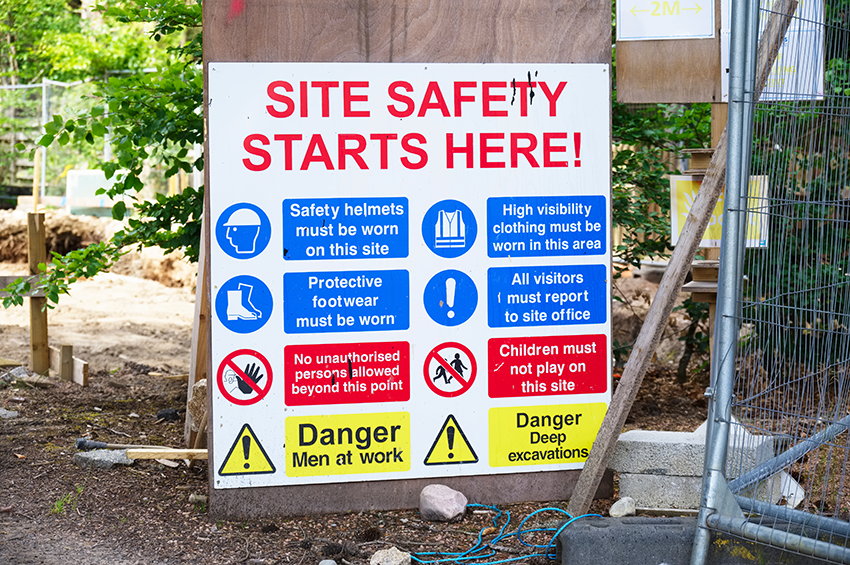Protective clothing, such as Personal Protective Equipment (PPE), is the first line of defence against workplace hazards, crucial for preventing injuries and illness. But are these crucial tools being worn and utilized effectively? The key lies in understanding the symbols and labels that PPE carries—a language of safety that every healthcare worker, safety enthusiast, and industrial professional should be fluent in. Proper training and knowledge can make all the difference in safeguarding the lives of workers. So let's suit up and prioritize safety!
Introduction
In high-risk environments, protective gear isn't just an accessory—it's essential gear that keeps you safe. The symbols and labels adorning PPE convey important information about the type of protection each item offers, ensuring users are well-equipped to handle the dangers that their job presents. Let's unravel the meanings behind these cryptic icons.
Types of PPE
Head Protection
Helmets and hard hats are emblazoned with symbols indicating impact and electrical protection levels. Recognising these can mean the difference between a close call and a serious injury.
Eye and Face Protection
Safety glasses and face shields come with symbols specifying the level of optical protection, providing adequate eye protection from projectiles, chemicals, or radiation. Don't forget to use earplugs for complete safety.
Respiratory Protection
Respirators are crucial in environments with particulate matter or harmful vapours, safeguarding against life-threatening illnesses. Symbols here indicate the type of filters used and their specific applications.
Hand Protection
Gloves may look similar, but their symbols tell a tale of resistance - protecting employees from cuts, temperature extremes, chemicals, and more. Proper hand protection is essential.
Foot Protection
Safety footwear, such as safety boots and shoes, may carry symbols to indicate slip resistance, toe protection, and other safety features that are essential to protect the feet while on the job.
Body Protection
High-visibility vests, lab coats, and full-body suits are examples of protective clothing that include vests and safety harnesses. These garments are labeled to indicate their specific use, such as thermal protection, chemical hazards, or mechanical risks. They are designed to fit comfortably.
Common Symbols and Labels
Understanding these symbols and labels is crucial for workers to make the right gear choices, eliminating guesswork and instilling confidence in personal protective equipment (PPE). Whether it's a flame symbol indicating fire resistance or a radio wave symbol for electromagnetic shielding, each symbol represents a specific feature designed to provide protection.
Signage
In addition to symbols and labels, signage plays a vital role in workplace safety. Clear and informative signs, including mandatory signs, help communicate hazards, precautions, and emergency exits, ensuring workers are kept safe in construction environments. Examples of different types of signs, such as those for falling objects, should be used to adequately comply with safety measures.
PPE Standards and Certifications
Navigating these symbols also means understanding the regulatory landscape. Organizations such as the Occupational Safety and Health Administration (OSHA) and the European Standards (EN) set the bar high for PPE. Look for certification marks like CE or ANSI on your gear—they're a stamp of approval from safety regulators.
Choosing the Right PPE
When it comes to workplace safety and minimizing exposure to hazards, having PPE is not enough. It is crucial to select the right kind of PPE for your workers. Start by assessing the specific hazards in your environment, such as chemical exposure, electrical risks, or mechanical dangers. Consider factors like fit, comfort, and suitability for the task at hand. Ensure safety by choosing PPE that bears the correct symbols and falls under the appropriate categories for your workers' needs.
Proper Use and Maintenance of PPE
Even Personal Protective Equipment (PPE) needs tender loving care. After all, what good is a damaged hard hat or a contaminated mask? Adherence to correct usage techniques, including wearing PPE properly, ensuring a comfortable fit, and following specific cleaning, storage, and disposal guidelines, ensures that when PPE is needed, it is ready to perform. By complying with these measures, workers can ensure they are adequately protected.
PPE Workplace Safety Culture
Creating a culture of safety within the workplace goes beyond providing Personal Protective Equipment (PPE). It involves cultivating an environment where safety is ingrained in every task, and employees are aware of their well-being and that of their colleagues. This safety culture is built on clear communication, regular training, and a shared commitment to following protocols. Mandatory PPE signage, minimizing exposure, and implementing administrative controls are essential in preventing serious workplace injuries. Recognizing hazards and ensuring proper maintenance further enhance safety. When PPE is integrated into a robust safety ethos, organizations can effectively protect their most valuable asset—their workforce. It's about creating a climate where safety is not just expected, but second nature; where PPE is part of the uniform, and its importance is universally understood and respected.
Conclusion
Understanding PPE symbols and labels is crucial for fostering a safety culture where each individual is empowered and educated about potential hazards. For healthcare workers, safety enthusiasts, and professionals in industries wearing protective clothing and workwear, including safety glasses, recognizing these symbols is non-negotiable. By practicing proper PPE usage, including safely designed gear, we can minimize exposure and keep ourselves and colleagues safe. This guide aims to educate and emphasize the importance of detailed knowledge in PPE use, as safety is a collective commitment to well-being in every sphere with hazards present. It is also important to note that OSHA standards play a vital role in ensuring workplace safety. This information is not only beneficial for professionals, but also for the general public to understand the importance of following safety guidelines. For example, wearing safety glasses can protect your eyes from potential hazards.

